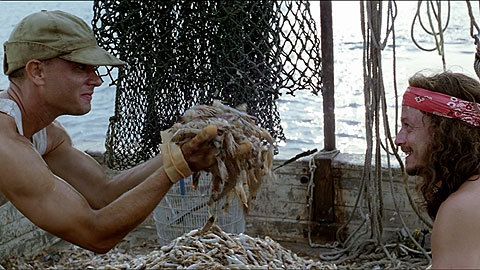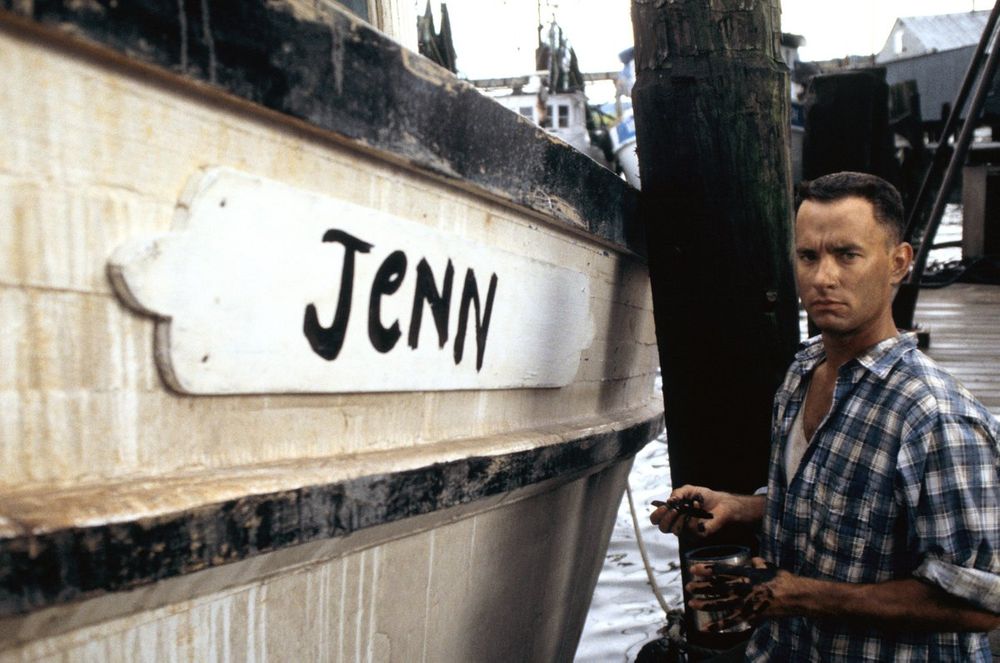In last week’s "Audience Builders" on Clubhouse, my co-hosts got right down to brass tactics. No high-level pontificating. Polina Marinova (The Profile), Jonathan Hunt (Complex Media), and Brian Morrissey (The Rebooting) shared only smart, practical, and actionable insights.
For example, take Jonathan’s question to Brian about his time building Digiday:
In the early days, why did Digiday publish every story at midnight?
The reason was a matter of intuition. At midnight, every story needed to be wholly original. Writers couldn't just hop on the news cycle as fast followers. Their work had to stand on its own.
As a result, Digiday developed a solid reputation for leading conversations. By supplying unique takes (at an odd hour), Digiday became an in-demand source for industry observers seeking an edge.
As Brian gave his reply, my mind drifted, like a solitary feather floating down from the sky, all the way back to 1994. I'm talking, of course, about Forrest Gump. As my subscribers know, I rarely resist a dated pop culture reference. Cringe if you must.

My favorite part of the movie is the shrimp boat sequence. To fulfill a promise to his fallen comrade Bubba, Forrest acquires a shrimp boat. He then recruits nihilistic cripple Lieutenant Dan as his first mate, and, of course, the pair make terrible shrimpers. Even so, their boat, The Jenny, survives the hurricane that wrecks every other vessel in their stretch of the gulf. The novices score the motherlode of shellfish, and The Bubba Gump Shrimp Company is born. The Jenny, it turns out, is the ship that launched a hundred chain restaurants.

So, "fish where the fish are" is simple enough. But the Bubba Gump story teaches a different lesson: to haul in an epic catch, you need to fish where no one else is fishing. Or, simply, shrimp where no one else is shrimping.
Which brings me back to building audiences.
We live in an age of abundance, and few things are as abundant as content. In any given hour, humanity publishes so much content that it would take over a century to subtweet it all.
Despite the overload, you can still break through. The key is to find the white space. Avoid the logjams of well-trodden topics. Seek out – and claim – new ground. Change what – or when – you're publishing to stand out.
Yogi Berra, and many others, put it well:
Nobody ever goes there. It's too crowded.
So dig Digiday's strategy. Leading a new publication, Brian knew his team couldn't afford to regurgitate the news. They needed enterprising stories that started new conversations.
The midnight-publishing rule instilled this discipline on his editorial staff. I think it may have made an additional impact beyond encouraging novel story choice.
At Inverse, we had similar strategies for off-hour publishing. We arrived at that decision differently, but it still made an impact. Michael Cahill, our brilliant former head of audience development, developed a clever approach of creating heat maps to analyze publishing times.
One set of maps compared Inverse and our competitors and revealed, unsurprisingly, our stories bottlenecked between 9 and 5, like rush-hour commuters in a crammed subway car.
The next set looked at readership of Inverse stories. We discovered that the best performing stories went live during off-hours – late at night, early in the morning, or on weekends.
Per Michael:
“We learned that it wasn’t just about being a part of the conversation, it was about knowing when to enter the conversation. Small publishers could get lost in a crush of content but if we timed it just right we could find a way to be heard.”
The results rang true. Inverse’s audience wears the label ‘geek’ like a badge of honor. They hang out online at all hours, hungry for the next thing to geek out on. By sticking to daytime delivery, our competitors failed to meet that demand, and so had we.
So we switched it up. By scheduling stories to publish at all hours, our staff fed our audience with plenty of midnight snacks and early breakfasts. Inverse filled the void.
The internet never closes. Use that to your advantage. But time-shifting isn't the only way to identify where audience demand is high and supply runs low.
Here are some other approaches to the Bubba Gump strategy.
Choose a novel intersection
Brian covered this angle in a recent issue of The Rebooting:
Intersections are where two areas meet and create new dynamics.
Any publication should start with a well-defined and distinct intersection. Execute this to stand out from – and above – the competition.
Slice thin
Follow the advice in my recent piece "Slice it thin", and you're bound to find some white space.
Look forward
One more from Yogi:
“It’s tough to make predictions, especially about the future.”
Do the work though, and it’ll pay off. Avoid joining the media horde obsessing over what’s happening right now. Instead, take a forward-looking view. Identify topics with obscure interest that you believe will have their moment in due time.
Inverse executed this when we started covering Elon Musk and SpaceX in-depth from our launch in 2015. At the time, these were still niche topics. Now Elon’s tweets make national news and SpaceX launches get massive live viewership. Inverse’s audience, too, has blasted off.
So next time you're wondering why your content isn't reaching an audience, think about Forrest and Lt. Dan on The Jenny. Are you trolling for shrimp in crowded waters? Or have you found pristine ocean overflowing with untouched bounties?
Use the Bubba Gump content strategy, and give your audience-growth efforts new legs.




